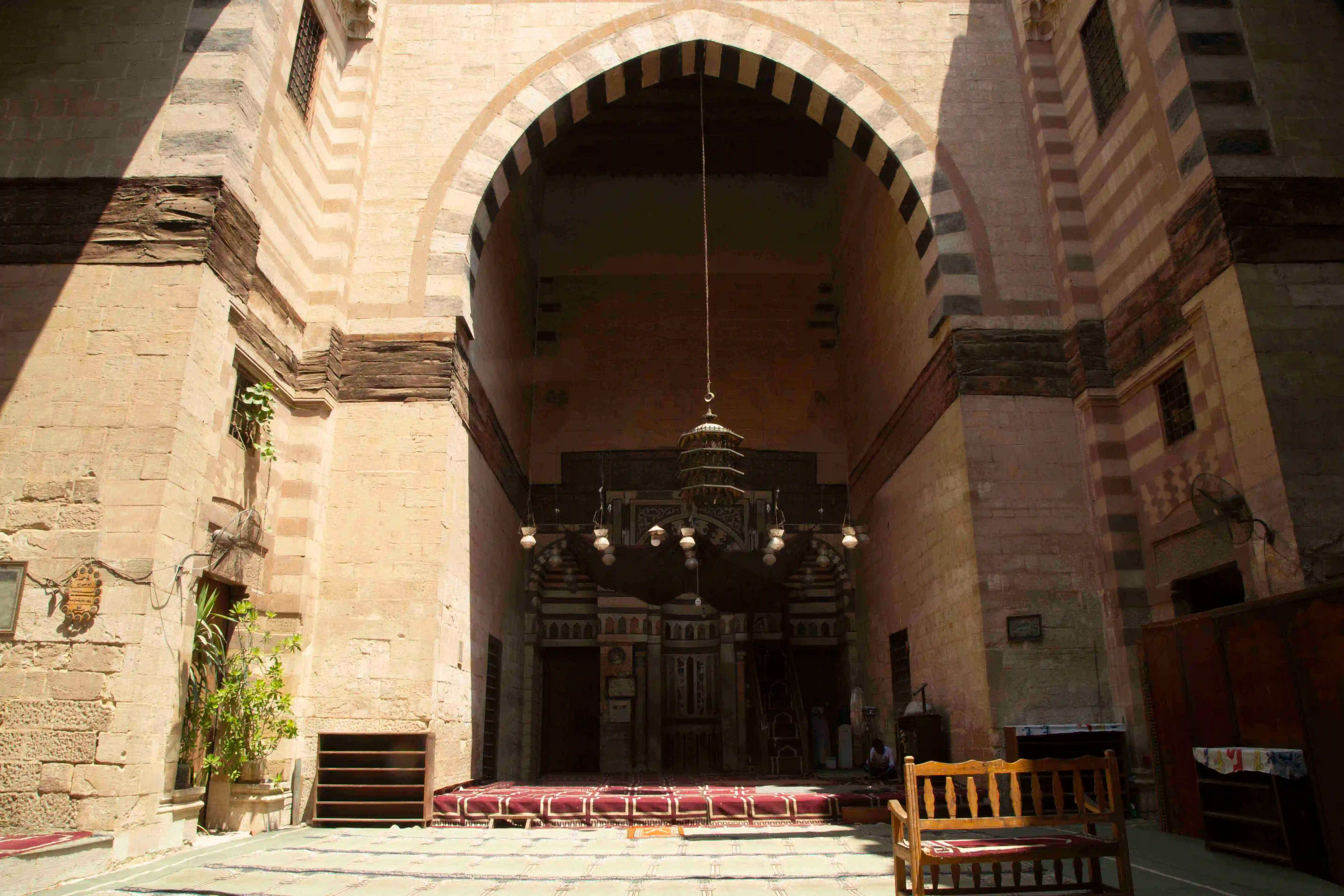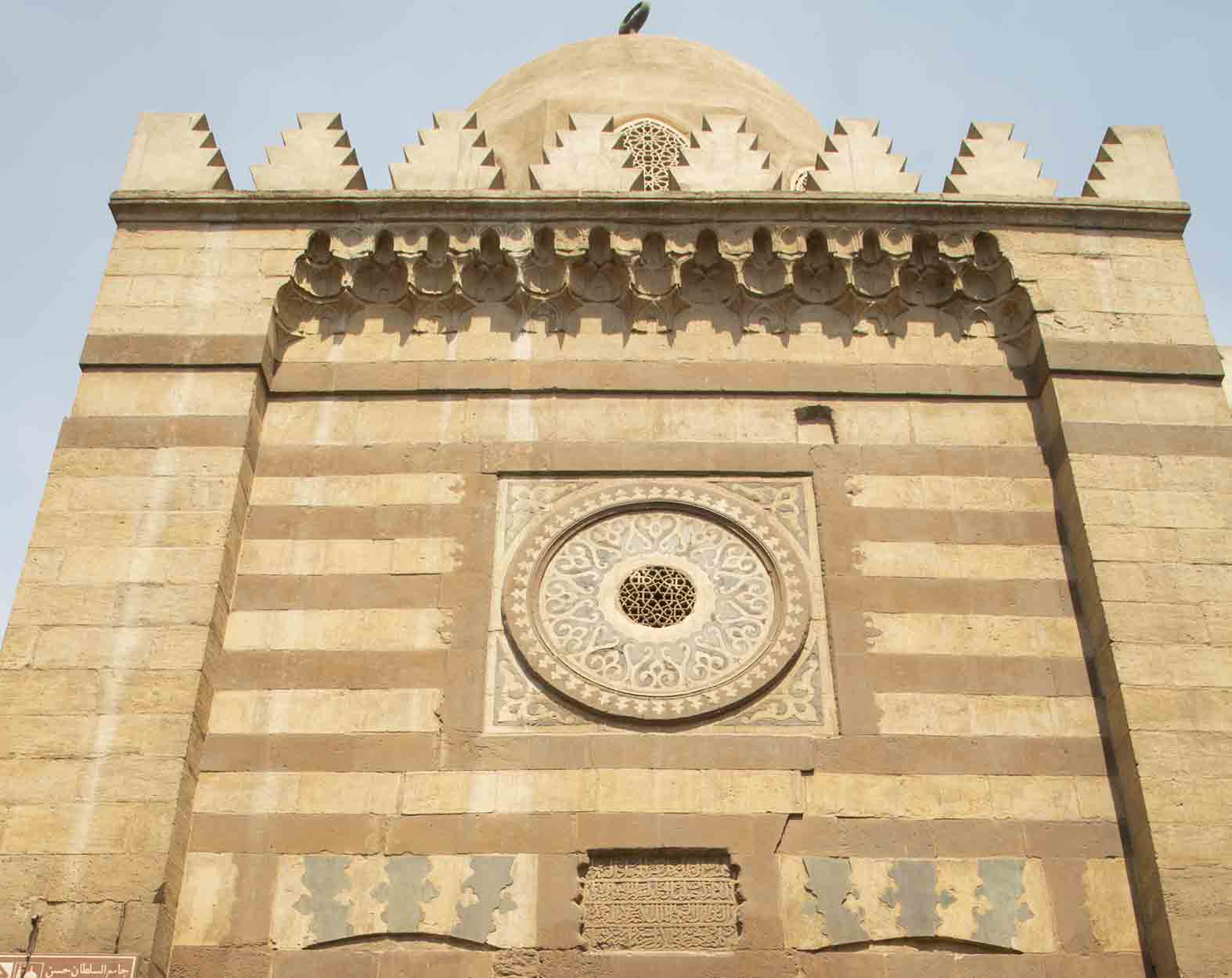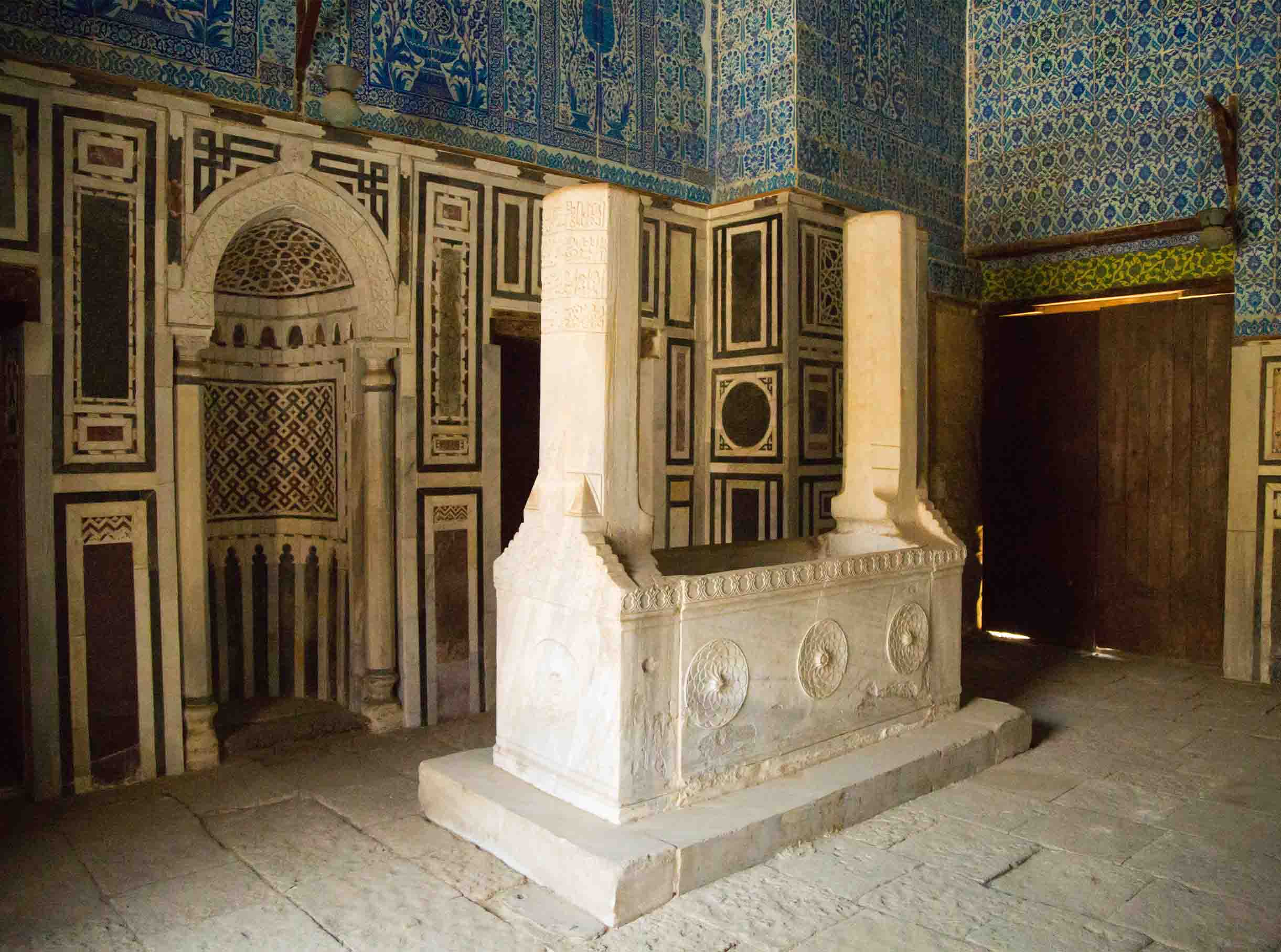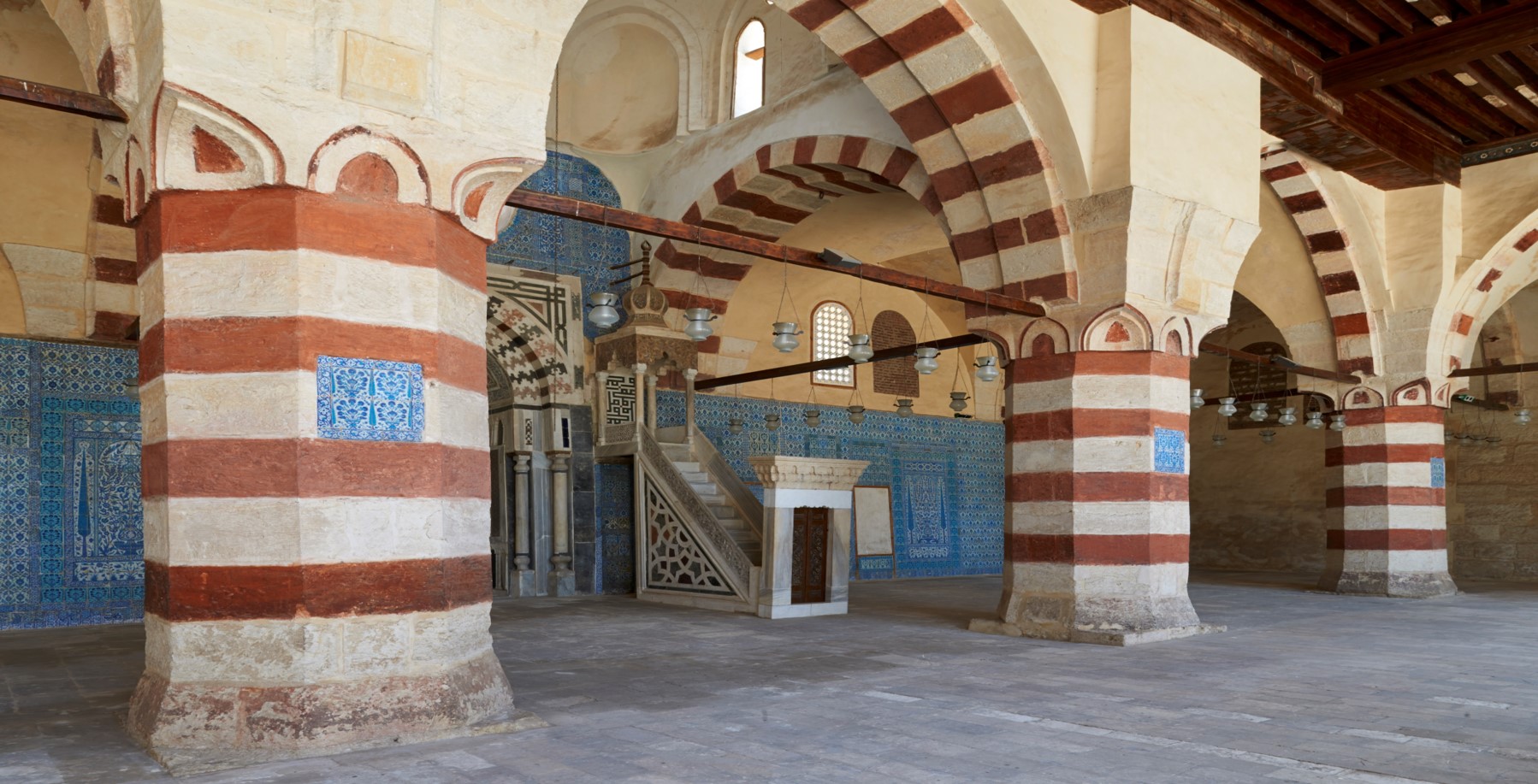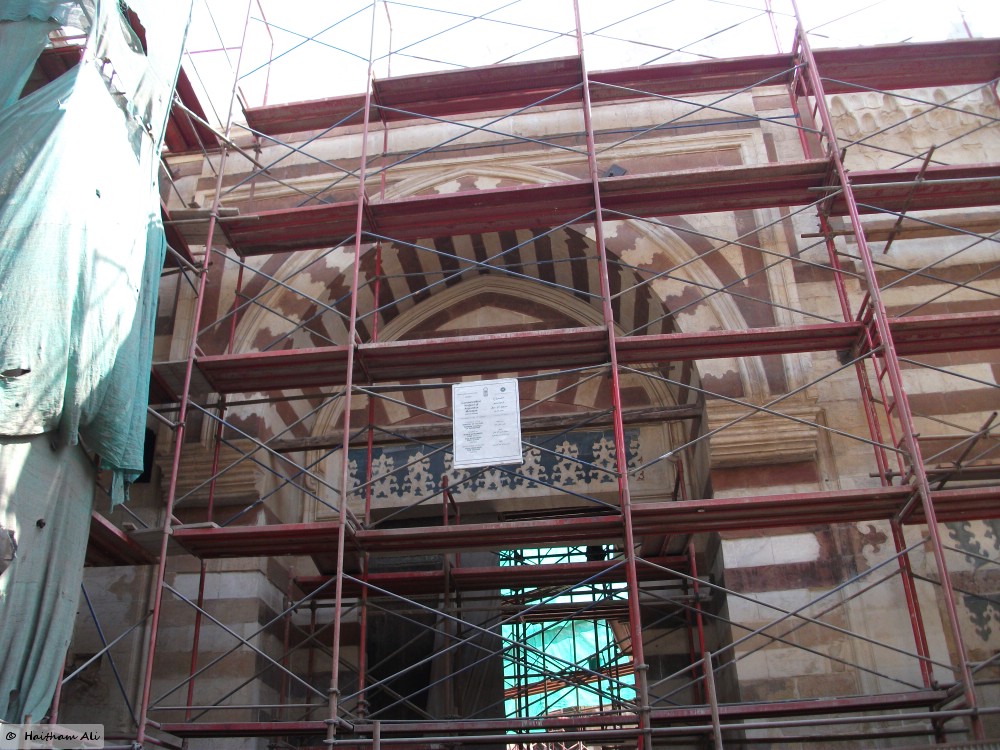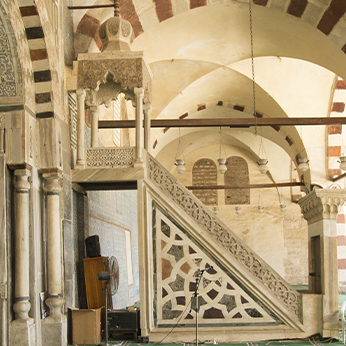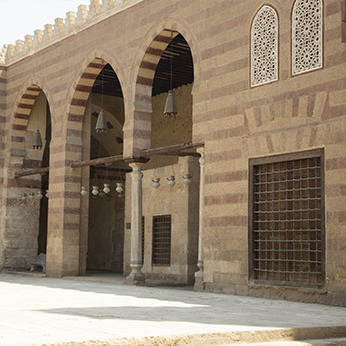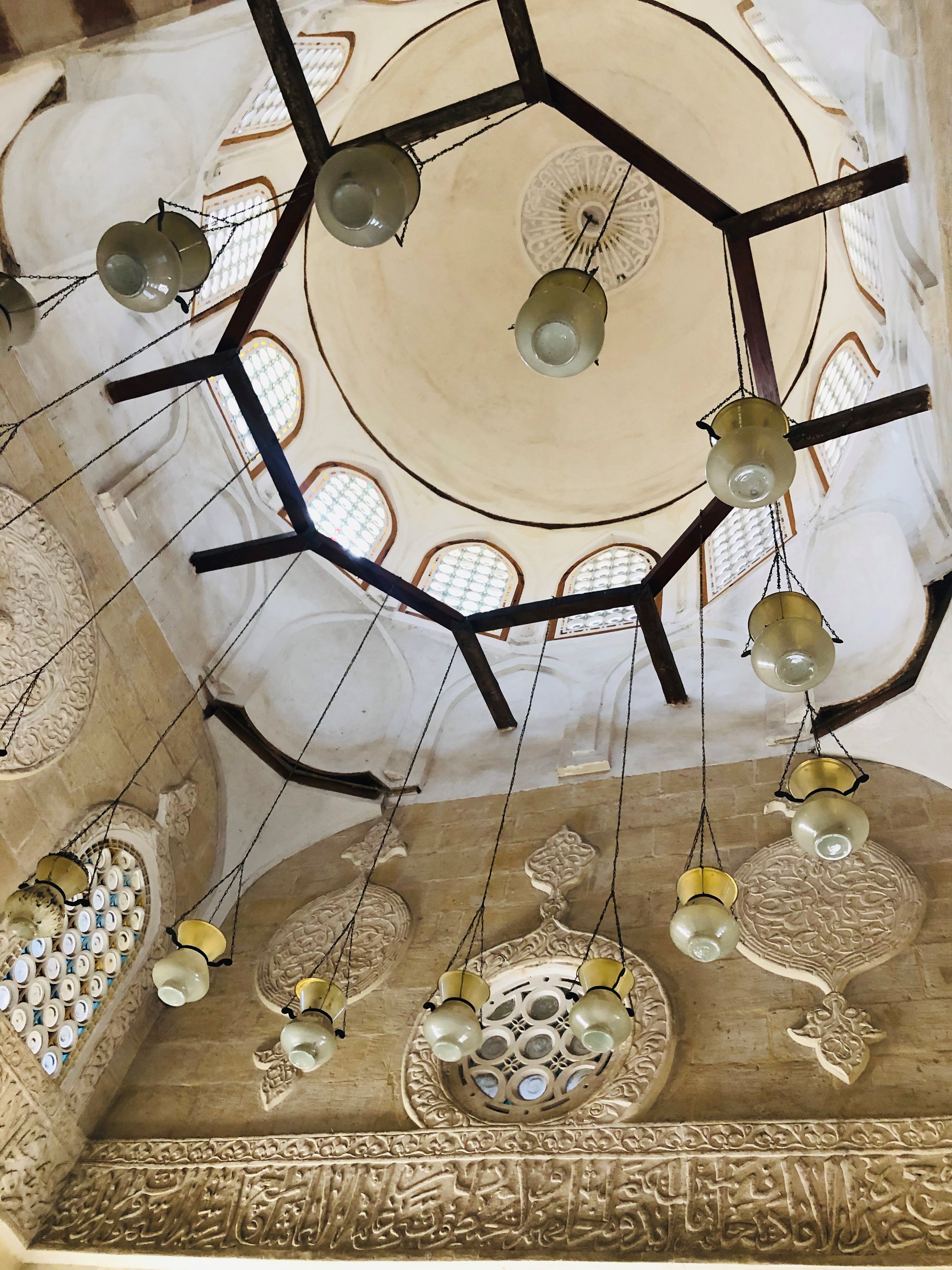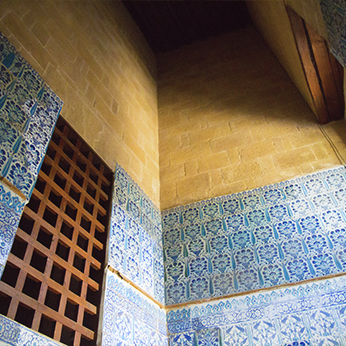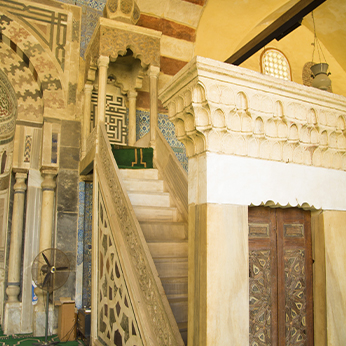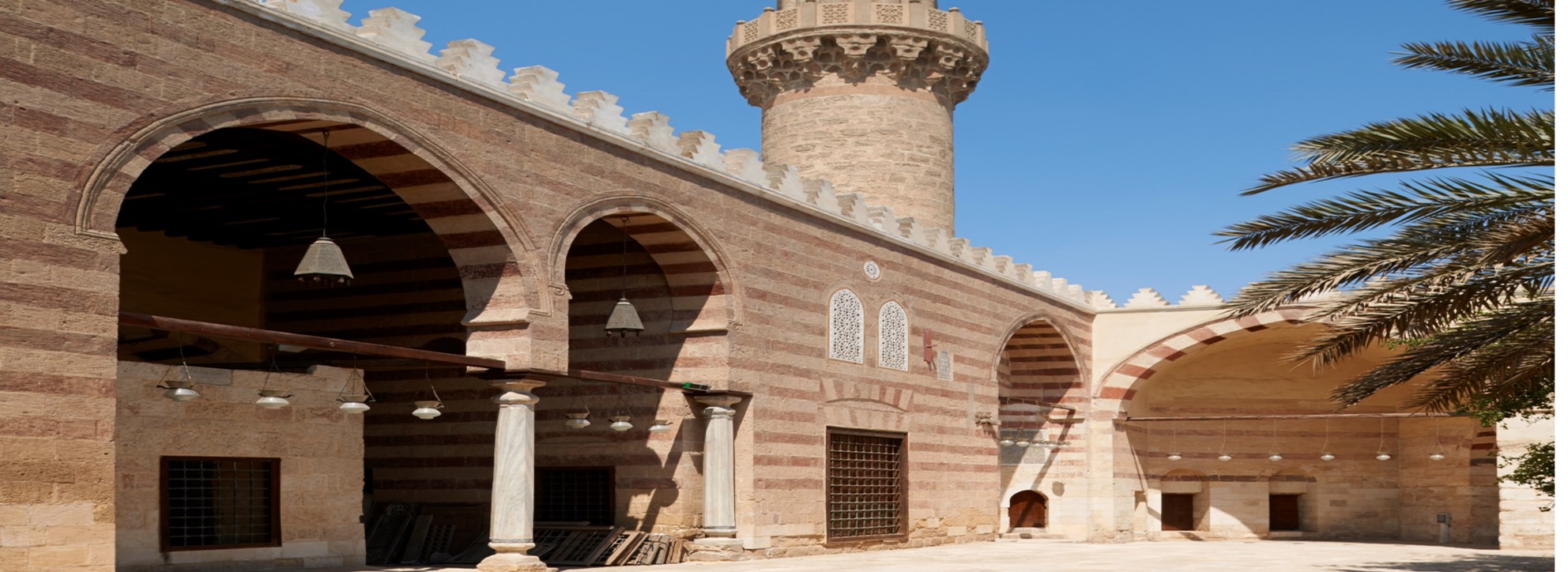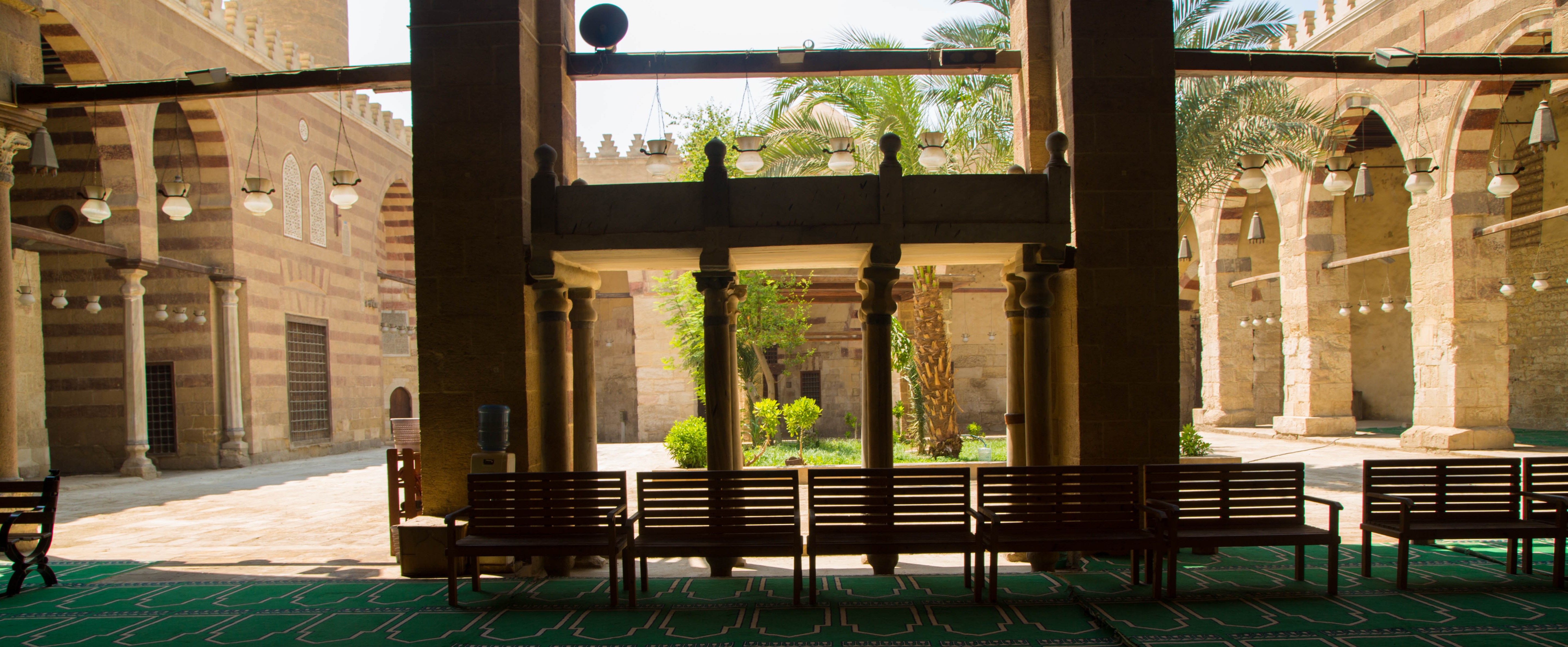Umm Al-Sultan Shaa’ban Mosque and Madrasa
This building is the only royal construction in Darb al-Ahmar. The Sultan Al-Ashraf Sha'ban Ibn Hussein Ibn Al-Nasir Mohamed Ibn Al-Mansour Qalawun commissioned the construction of this madrassa for his mother Khwand Baraka Khatoun Bent Abdullah and wife of Al-Amir Al-Amagad Hussein Ibn Al-Nasir Mohamed Ibn Qalaqun, who was the father of her son Al-Ashraf Sha'ban. Khwand Baraka was appreciated due to her contributions and donations, especially during her pilgrimage year in 770 AH (1368AD) to the extent that this year was known among the people by her name as Umm Al-Sultan (i.e. mother the sultan) year. In addition, she played a major role in the political life of the time and in consolidating her son’s, rule. She died in 774 AH (1372 AD).
